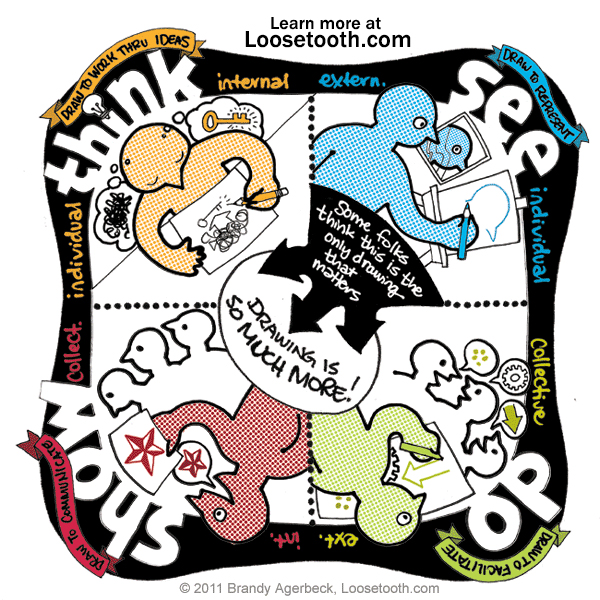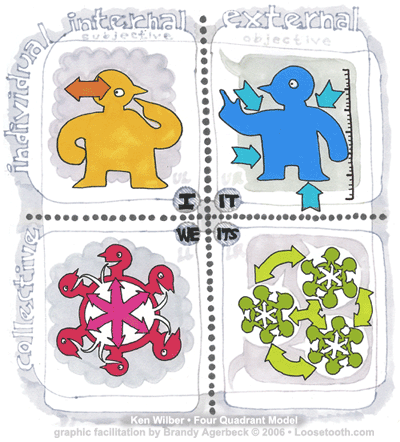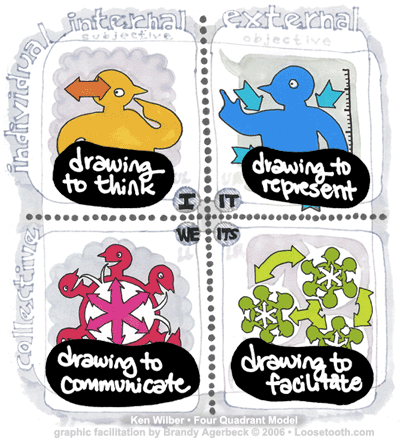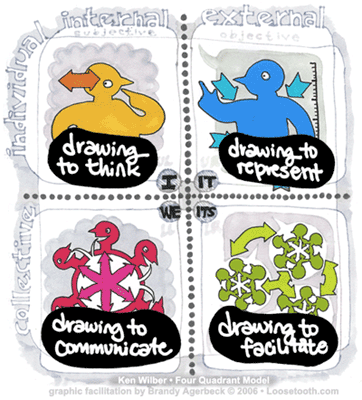 |
The
Draw Quad I've been working on better ways to describe drawing and to demonstrate all the dimensions to it. Years ago, I learned about Ken Wilber's Four Quadrant model. Please take a second to read my previous page about it. And if you have some time, here's a great presentation about it, closer to the source. As my ideas percolated, I thought about using this model as an overlay to my ideas about drawing. |
First, here's
a model colorful version of the model:


Here
is drawing to work out your ideas. Getting your ideas, thoughts,
feelings out of your head and onto paper. These drawings are personal,
they don't have to be for anyone but you. These images can be
fast, messy, temporary. |
 |
|
These
are drawings you create to speak to a specific audience. You are
crafting a message to share. Often because these images are conveying
something specific, they need to be more refined. Get your point
across. |
This
is about bringing your drawing skills to a group to serve their
work. This is where graphic
facilitation lives. This is about using paper, post-it notes,
markers to do better work because you can visualize what you're
doing. The group can all be on the same page. These are works
in progress, in process. |
|
|
|
Because
I'm a huge fan of iteration, here's a more detailed drawing
of these ideas: |
 |
As I noted in the SEE quadrant above, many folks think that drawing to represent is the only drawing that matters. The only drawing that is "right" or "correct." It is 25% of the picture. I think there is loads of value to developing the SEE skills of drawing an object accurately. Through this work you observe the world differently, develop great strengths between your hands, brain and eyes. AND you can do fantastic drawings in the THINK, SHOW and DO spaces too. I hope this model will widen your horizons about drawing. This site will hold more resources about all of four quadrants. I'll admit, my passions about drawing are the THINK and DO quarters. If you want to get
your hands on this model, here's a
paper toy. |